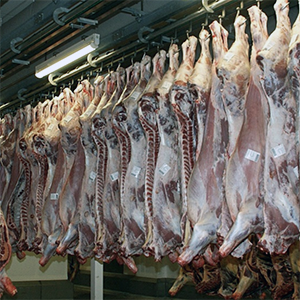Effects of post-mortem inspection techniques change on the detection capability of low public health impact diseases of slaughtered pigs: A quasi-experimental study

Accepted: 22 November 2022
HTML: 9
All claims expressed in this article are solely those of the authors and do not necessarily represent those of their affiliated organizations, or those of the publisher, the editors and the reviewers. Any product that may be evaluated in this article or claim that may be made by its manufacturer is not guaranteed or endorsed by the publisher.
Authors
Slaughtered animals are regularly submitted to post-mortem inspection to ensure that all the edible parts are fit for human consumption. According to Regulation (EU) No 219/2014, pig carcasses inspection is exclusively visual as palpation and incision could lead to cross-contamination and spread of relevant zoonotic agents. However, when compared to incision and palpation, the visual method is characterized by low sensitivity; thus, the omission of incision and palpation could lead to a reduced detection capability of organic lesions. This study aims to assess the effectiveness of exclusively visual inspection to mark pulmonary and hepatic lesions associated with low public health impact diseases in pork carcasses. A quasiexperimental- before/after research protocol has been used. All the post-mortem inspections have been carried out in a slaughterhouse located in the province of Teramo (IT), on 7,764 swine from 2011 to 2017. Carcasses undergone the only visual inspection have shown a statistically significant reduction (pvalue <0.0001) in the diagnosis of hepatic (decrease of 59%) and pulmonary diseases (decrease of 38. 5%). To overcome the limits of the low sensitivity of the visual inspection, as well as the inter-operator diagnostic variability, the high number of carcasses examined is proposed as a factor conferring external validity to the study, which provides quantitative evidence in support of the causal association between the modified inspection technique and the reduced diagnostic capacity. A further support derives from the assessment of the prevalence of hepatic and pulmonary diseases in species for whom the inspection technique is not changed.
How to Cite

This work is licensed under a Creative Commons Attribution-NonCommercial 4.0 International License.
PAGEPress has chosen to apply the Creative Commons Attribution NonCommercial 4.0 International License (CC BY-NC 4.0) to all manuscripts to be published.

 https://doi.org/10.4081/ijfs.2022.10761
https://doi.org/10.4081/ijfs.2022.10761



